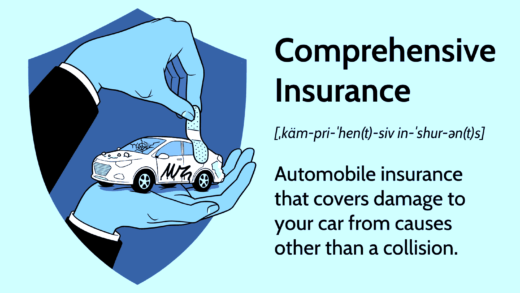This article provides insights into the ten cars with the worst safety ratings, explaining the reasons behind their low scores and the missing safety features. It discusses the impact of these ratings on insurance costs, driving risks, recalls, and resale value, while offering alternatives and tips for choosing safer vehicles.
Worst Safety Rated Cars: A List of 10
When it comes to worst safety rated cars, it’s crucial to know which vehicles fall short in safety evaluations. Here’s a list of ten cars that have received poor safety ratings:
- Ford Fiesta
- Chevrolet Spark
- Nissan Versa
- Kia Rio
- Hyundai Accent
- Jeep Compass
- Fiat 500
- Subaru BRZ
- Mitsubishi Mirage
- Chrysler 200
These vehicles often lack essential safety features and have been noted for their vulnerability in crash tests, making them less desirable options for safety-conscious consumers.
Reasons for Low Safety Ratings: What’s Going On?
The cars with low safety ratings typically share common deficiencies that contribute to their poor evaluations. One primary reason is inadequate crash protection. Many of these models may not perform well in frontal and side-impact tests. Additionally, the structural integrity of these vehicles is often compromised, failing to absorb impact effectively.
Another reason is the absence of advanced safety technology. Features like automatic emergency braking, lane-keeping assist, and adaptive cruise control are often missing. As a result, these cars are at a higher risk of accidents and injuries.
Furthermore, manufacturers may prioritize cost savings over safety, leading to the omission of critical safety features. Understanding these reasons helps consumers make informed choices when selecting a vehicle.
Missing Safety Features in Cars: What Are They?
Many of the cars with low safety ratings lack essential safety features that are increasingly standard in newer models. Here are some of the key features often missing:
- Automatic Emergency Braking (AEB)
- Blind Spot Monitoring
- Lane Departure Warning
- Rear Cross Traffic Alert
- Adaptive Headlights
Without these features, drivers and passengers are at a heightened risk during collisions. The absence of such technologies can lead to higher insurance costs and greater likelihood of injury in accidents. It is important for consumers to check for these safety features before purchasing a vehicle.
Insurance Costs for Low Safety Rated Cars: The Price Tag
The worst safety rated cars not only compromise your safety but also impact your wallet when it comes to insurance costs. Insurers consider safety ratings when determining premiums. Cars with low safety ratings generally attract higher insurance rates. This is because these vehicles are statistically more likely to be involved in accidents, leading to more claims.
For instance, a study found that drivers of low-rated vehicles pay, on average, 20-30% more for coverage compared to those driving safer models. Here are some key factors influencing these costs:
- Accident Risk: Lower safety ratings correlate with higher accident rates, prompting insurers to increase premiums.
- Repair Costs: Cars that lack safety features may incur higher repair costs after accidents, which also affects insurance pricing.
- Market Demand: If a vehicle is known for poor safety, fewer buyers will want it, leading to higher insurance costs for those who do.
In conclusion, opting for cars with low safety ratings can lead to significant long-term costs, making it essential to consider insurance expenses in your vehicle choice.
Risks of Driving Low Safety Rated Cars: Is It Worth It?
Driving low safety rated cars presents several risks that are often overlooked. While these vehicles may seem appealing due to their lower price tags, the potential dangers far outweigh the savings. Here are some crucial risks associated with these cars:
- Increased Injury Rates: The lack of safety features means higher chances of severe injuries in accidents.
- Vulnerability in Crashes: Cars with poor crash test ratings are more likely to suffer catastrophic failures during collisions.
- Emotional Toll: The stress of driving an unsafe vehicle can lead to anxiety, impacting overall well-being.
When evaluating whether it’s worth driving a low safety rated car, consider the potential consequences. Is saving a few bucks really worth risking your life and health?
Recalls for Unsafe Vehicles: What You Should Know
Recalls are common for unsafe vehicles, and knowing about them is vital for consumers. Many cars that receive low safety ratings have histories of recalls due to safety issues. Here’s what you need to understand about recalls:
- Frequency: Cars with poor safety ratings are often recalled more frequently than their safer counterparts.
- Types of Issues: Recalls can involve defective brakes, airbags that fail to deploy, or structural weaknesses.
- Manufacturer Accountability: Automakers are responsible for addressing these recalls, but not all do so effectively.
Before purchasing a vehicle, always check for any outstanding recalls. This simple step can help ensure you are not driving a potentially dangerous car. Ignoring recalls can lead to dire consequences and further exemplifies why low safety rated cars are a risky choice.
Safety Ratings vs Industry Standards: How Do They Compare?
The worst safety rated cars often fall short of industry standards set by organizations like the National Highway Traffic Safety Administration (NHTSA) and the Insurance Institute for Highway Safety (IIHS). These standards are established to ensure vehicles provide adequate protection during crashes. In contrast, many low-rated vehicles lack the necessary structural integrity and safety features to meet these benchmarks.
For example, while a car might receive a 5-star rating for overall safety, its performance in specific crash tests could reveal weaknesses. Cars with low safety ratings may score poorly on side impact tests or fail to protect passengers effectively in frontal collisions. This disparity highlights the importance of not just relying on overall ratings but also understanding the specific areas where a vehicle may underperform.
Safer Car Alternatives: What Are Your Options?
For those considering safer car alternatives, numerous vehicles consistently earn high safety ratings. Brands like Volvo, Subaru, and Honda have models that prioritize safety without sacrificing style or performance. Here are a few options:
- Volvo XC90: Known for its robust safety features and excellent crash test scores.
- Subaru Outback: Offers standard all-wheel drive and advanced safety technology.
- Honda Accord: A midsize sedan that combines reliability with high safety ratings.
- Tesla Model 3: Features cutting-edge safety technology and a strong safety rating.
Choosing a vehicle with a strong safety record not only protects you but can also provide peace of mind. Researching safety ratings from trusted sources can guide you to a safer vehicle that meets your needs.
How to Choose a Safe Vehicle: Tips for Buyers
When selecting a vehicle, understanding how to choose a safe vehicle is crucial. Start by checking the safety ratings from reputable organizations. Look for vehicles that have:
- High crash test scores: Prioritize vehicles that perform well in both frontal and side-impact tests.
- Advanced safety features: Ensure the car is equipped with features like automatic emergency braking, lane departure warnings, and blind-spot monitoring.
- Positive consumer reviews: Read reviews from current owners regarding their experiences with safety and reliability.
- Recall history: Research if the vehicle has had multiple recalls due to safety issues, as this can indicate potential problems.
Taking these factors into account will help you make an informed decision and choose a vehicle that not only fits your lifestyle but also prioritizes your safety on the road.
Impact of Safety Ratings on Resale Value: What’s the Deal?
The impact of safety ratings on resale value is significant. Vehicles that score poorly on safety ratings tend to depreciate faster compared to their safer counterparts. This is primarily because consumers are becoming increasingly safety-conscious, often willing to pay more for a vehicle that offers better protection.
In fact, a study indicated that cars with high safety ratings maintain their value better over time. For instance, a vehicle with a 5-star safety rating might retain 60% of its value after five years, whereas a low-rated vehicle might only hold 40% of its value. This discrepancy is essential for buyers to consider when evaluating long-term investment in a vehicle.
In summary, prioritizing safety not only protects you while driving but also contributes to better resale value down the line. Opting for cars with higher safety ratings can be a smart financial decision.





Comments are closed.